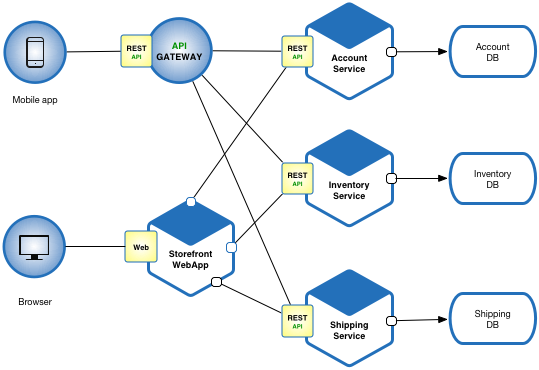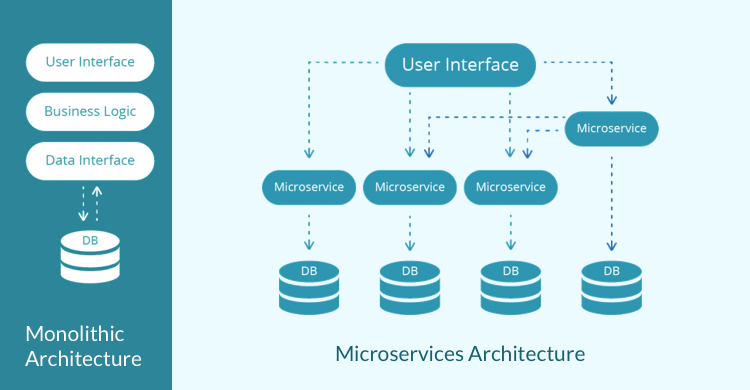When building your Java-based software product, the right approach to your software architecture can save tons of time, money and help maintain the high product quality for end users. That is why the moment of architecture design is crucial, regardless of how tech-savvy you are as a founder, whether it is your in-house CTO who makes the final decision or you decided to order Java software development services from a software engineering vendor and they become your technology guide and partner.
Read Also:- 5 Easy Fixes for Common Computer Problems
Introduction
After gradually appearing in the 2011-2012, the microservices architecture has conquered many products across multiple industries. It is used by such industry leaders as Amazon, eBay, Walmart, Spotify, Netflix and Uber. It appeared as an alternative to the rigid monolithic architecture and offers many advantages for both the product and business, if applied in the right way. Despite its many benefits, it is not a silver bullet, and you shouldn’t opt for it only because it’s trending. Of course, it’s always best to consult with an experienced CTO before selecting your architecture approach and giving your team a heads up, or hire a proven consulting company (e.g. Waverley Software), who can evaluate your needs and scope and find a perfect-matching solution. Regardless of whether you’re working alone or with guidance, consider the following questions first:
- What are the main goals of my product architecture?
- What are the priorities? Is it the speed? Scalability? Resilience?
- What kind of a team will work on my product?
- How complex is the product? How often do I plan to change things, add new functionality?
- Will I need to implement DevOps practices?
The answers to these and other questions will help you determine whether microservices architecture is the right choice for your product, or you need to consider the alternatives to reach your objectives. In any case, it won’t hurt to find out more about this architecture style and it’s peculiarities. Let’s start with the basics.
What is Microservices Architecture?
Source: https://microservices.io/i/Microservice_Architecture.png
Microservices architecture is an approach to building software which presupposes that any program consists of a number of separate services. Those services are independent, loosely coupled, can be separately built to support various business processes and then integrated into one system. Each service can be deployed and updated separately from the others, communicating with them through APIs.
This approach is especially convenient for building large-scale complex software applications, which incorporate multi-layer business logic.
What are the Benefits of Microservices Architecture?
1.Simplicity
Every service has its own code base, which makes it easy to build and very easy to maintain. Microservices architecture makes software simpler, because all the functionality layers don’t get built up and in case you need to fix something, you don’t need to get through the code jungle, each separate service is a lot easier to navigate.
2. Flexibility
You have the flexibility to build each microservice using a different programming language, and then “introduce” them through an API. This will allow you to choose the best-fitting tools and technologies for different purposes and pieces of functionality. Moreover, you won’t have to focus on a particular technology stack when recruiting or outsourcing your team, you are a lot more flexible in selecting your team members.
3. Scalability
With the microservices architecture, you can work with each service separately, update it, deploy it without affecting the others. You can quickly expand the functionality, add support for various devices, customize as needed, without the need to update the whole application. Microservices are easier and faster to scale and expand.
4. Resilience
Software built on the basis of microservices architecture is a lot more resilient to errors and bugs, helping minimize the impact overall. If there’s a failure in one of the services, it won’t affect the others. And you can easily navigate your way around the code to fix it fast. This fault-isolation ability is one of the main benefits of microservices architecture as opposed to the monolithic one.
Source: https://dzone.com/articles/monolithic-vs-microservices-which-is-the-better-ar
5. Ease of Understanding
Microservices architecture is easy to understand and easy to navigate, better structured and thus a lot simpler compared to the monolithic architecture design. As a result, it requires less time to figure things out and onboard new employees and team members.
6. Agility
You are able to quickly update the exact part of your software which needs updating, add support for various devices, and fix an urgent issue. Without the need to spend lots of time trying to find the location of the bugged code. Working with smaller code bases increases speed and productivity significantly.
7. Business Focus
It is focused around your business objectives. Each service performs the necessary function, and you are free to change the functionality, switch it on and off, if your business strategy requires so. As you test your software on real users, you also can quickly respond to their needs, tailoring your software to fit the volume, pool of supported devices and enhance your user experience.
8. Outsourcing Ability
Microservices architecture allows you to easily segment your software and outsource the development of separate services. It will help you optimize your expenses, streamline the development or fill in the expertise gaps without the recruiting/onboarding overhead. The structure of microservices is such that allows external developers to work perfectly well on their services, without access to other software parts or any sensitive data they contain.
Afterword
Microservices architecture is a great alternative to the rigid monolithic software structure. It allows building large-scale complicated software that is both easy to understand, maintain and scale. It requires a lot less time for onboarding and doesn’t limit business owners to hiring only a specific technology stack. The microservices architecture, of course, works best if applied to the right kind of project, for example, when you need to:
- Support a great variety of clients and device, run numerous instances of the application on multiple machines
- Support multiple integrations with 3rd-party services
- Work with the emerging technology stack
It has several drawbacks, too, that you should be aware of when considering this approach:
- Network latency and load balancing
- Potential issues in communication between services
- The need for DevOps and CI/CD
If you are still confused and not sure which approach to follow, you can always resort to the help of experienced Java development consultants (https://waverleysoftware.com/java-software-development-services/) , who will guide you through the advantages and disadvantages of microservices architecture, review your business model and software requirements and help select the right software architecture to support all your needs. Good Luck!


